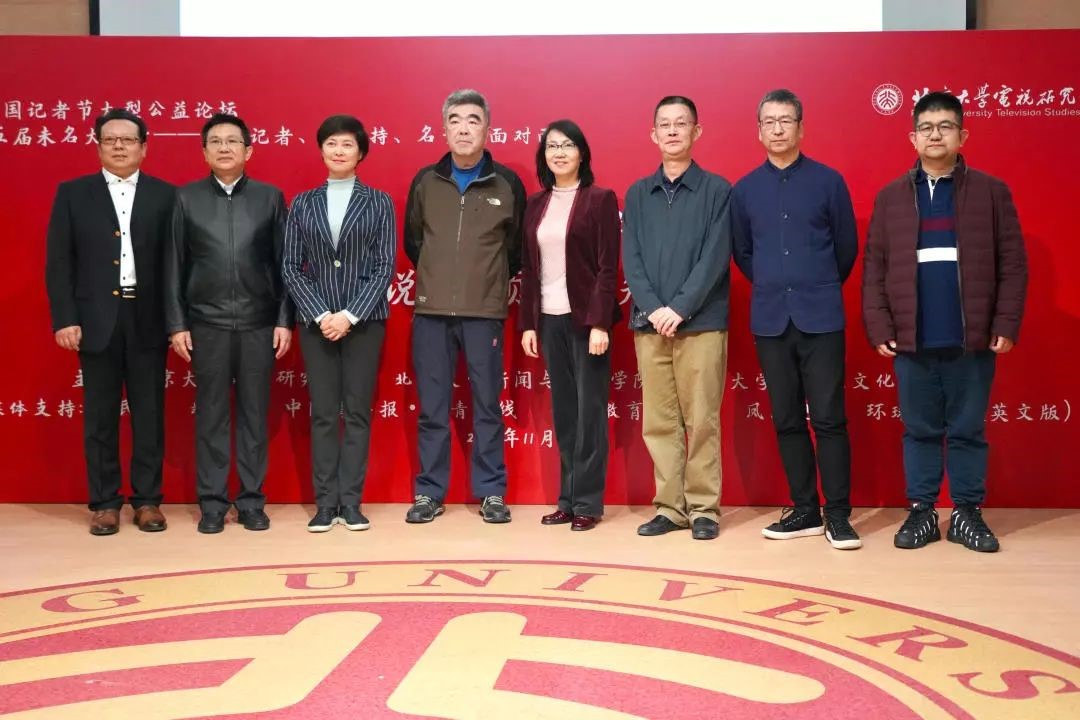Peking University, Nov. 13, 2019: On the occasion of Chinese Journalists’ Day which falls on November 8, Peking University Television Studies Center hosted a forum with the theme “How to be a Journalist Today: On Long and Short Videos”. More than 200 presenters, journalists, experts, teachers, and students gathered to participate in this grand event.
In recent years, short videos have started popping up everywhere, and even central media networks have joined in this trend, producing short, clipped videos of everyday news. How should journalists deal with this new form of media? Does this mean that traditional media will be superseded? These questions were dissected during the forum.
The distinguished guests at the forum
Professor Yu Hong, vice dean of the Peking University School of Journalism & Communication, started out by recalling themes of the forum in the past few years, explaining how they always revolved around the hot issues at that time. By looking at different themes, one could see how media has evolved over the years. This brought to the keyword of this year: short videos.
Professor Yu then listed a series of statistics, showing how popular short videos have become.
The 4G technology catalyzes live broadcasting, which became a space where people could record every aspect of their lives and a room for self-release. The fast pace of our lives requires us to share and release quickly. And now 5G is here, so our lives will be even swifter than before. What affect does this speed have on our lives?
Short videos flourish amid the growing demand. According to Yu, short videos can meet the needs of people who need to continuously transmit and share. To the receivers, the short video is a fragmented, shallow, and instant form of communication. There is no professional or artistic pursuit to support short videos, so how will it continue to develop? The needs of the receiver are endless, so how long will this fragmentation continue? Technology is continuously moving forward, and faced with these constant changes, journalists should focus on the unchanging.
“When teaching, I always emphasize 5 skills: text communication skills, oral communication skills, video communication skills, data processing skills, and marketing skills,” Yu said. In this revolutionary age, these are the skills that can keep you afloat.
 Yu Hong speaking from the perspective of communication
Yu Hong speaking from the perspective of communication
Bai Yansong, a well-known presenter with China Central Television, noted that we should be more positive about the future. When I graduated from the university 30 years ago, those working in the radio stations were worried that they would be laid off soon due to the rapid development of television. But 30 years have passed, radio stations are still here, with room for continuous improvement. So we shouldn’t be so negative about new media, because in another 15 years, the Internet may become “traditional media” as well, Bai said.
So what should journalists do in this continuously changing environment? Bai said he has always believed in the four fundamental skills of a journalist, namely: the ability to turn an event into news, which will require one to condense the core of a news event into as few words as possible quickly and accurately; the ability to write, which is a required skill in any aspect of communication; the ability to ask questions, in which curiosity is crucial; and the ability to speak. With these four skills in hand, a journalist will never have to worry about unemployment.
The media is always producing new kind of products, Bai said. Short video is just the newest product of the media. A product of the media can either be grain or anesthetic, both of which have their own value of existence. Grain provides nutrition, while anesthetic can remove one’s pain. There is no problem with anesthetic itself, but if it is misused it can be quite harmful. If one in the process of maturity takes too much anesthetic and eats too little grain, then his growth will be impaired. This is the same with short videos. An appropriate amount is harmless, but overdoses can be risky. So, Bai emphasized the importance of building up a resistance toward addiction instead of complaining about its existence.
In the last part of the speech, Bai made his point on short videos. He envisaged in the generation of 5G, short videos will become slightly longer videos of 3-5 minutes. But length in time does not necessarily mean that it is better. He hoped that short videos could be “longer” quality-wise, because the shorter the video, the harder it is to condense the information to its core.
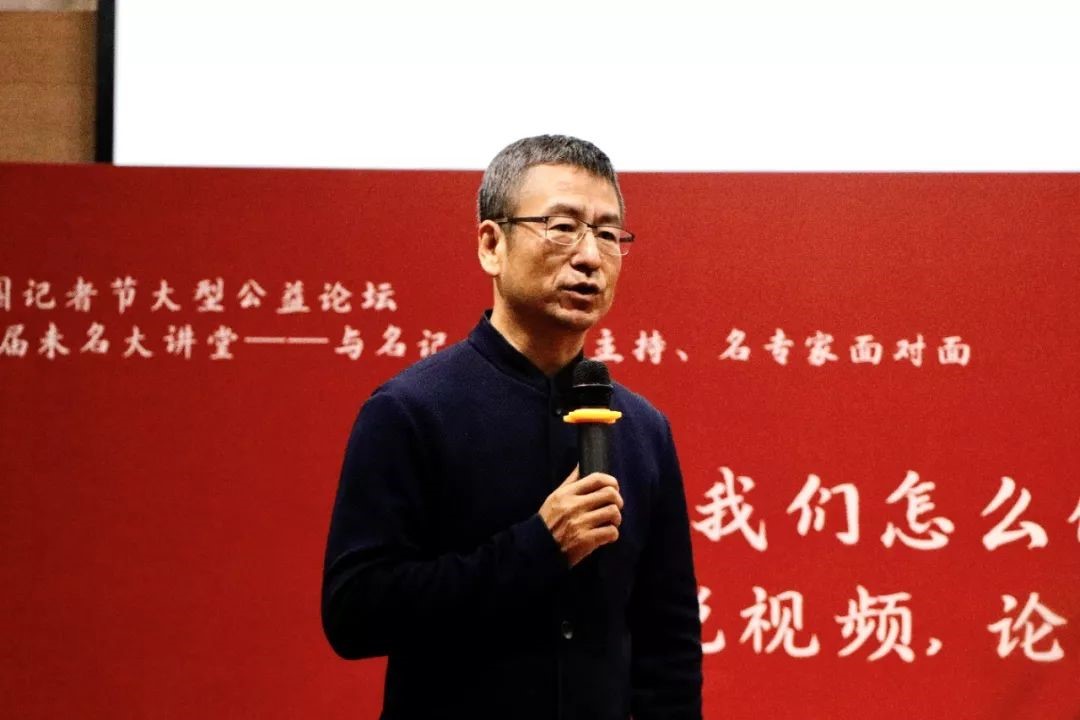
Bai Yansong emphasizing the fundamental skills of a journalist
Hu Zhifeng, dean of Beijing Normal University School of Arts & Communication, compared three types of videos in our lives, i.e. short videos, movies, and TV shows.
The short video has the largest coverage and highest participation rate, which means that we have to be stricter with the examination and filter out all the harmful products. Because the length is limited, the content of the short video is often “shallow”, “vulgar”, or “lightweight”. If the harmful content is filtered out, the short video’s existence will be neither hazardous nor beneficial, and there might even be some situations where we need it.
In the present, movies are a kind of art, an indication of the current fashion and trend. Unfortunately, China’s movie industry is still immature, and the quality of the movies are inadequate in various aspects. So, in the future, we should work hard to create an aesthetic system unique to China. Admittedly, this is a difficult job, but people in the media industry should have the awareness to work towards this direction.
TV shows are still part of China’s mainstream media. Hu Zhifeng said to develop television shows, we should first start by developing our creativity and technology. Currently, the television’s audience is the masses, but Hu argued we should start mixing it up with the technology of the Internet and start transitioning towards an audience of individuals.
Everyone is worried that “traditional” media will be replaced by “modern” media. However, as long as they develop their own individual appeal, traditional media will not die out. Instead, traditional and modern media can complement and integrate with each other. This is what Hu hopes to see in the future.
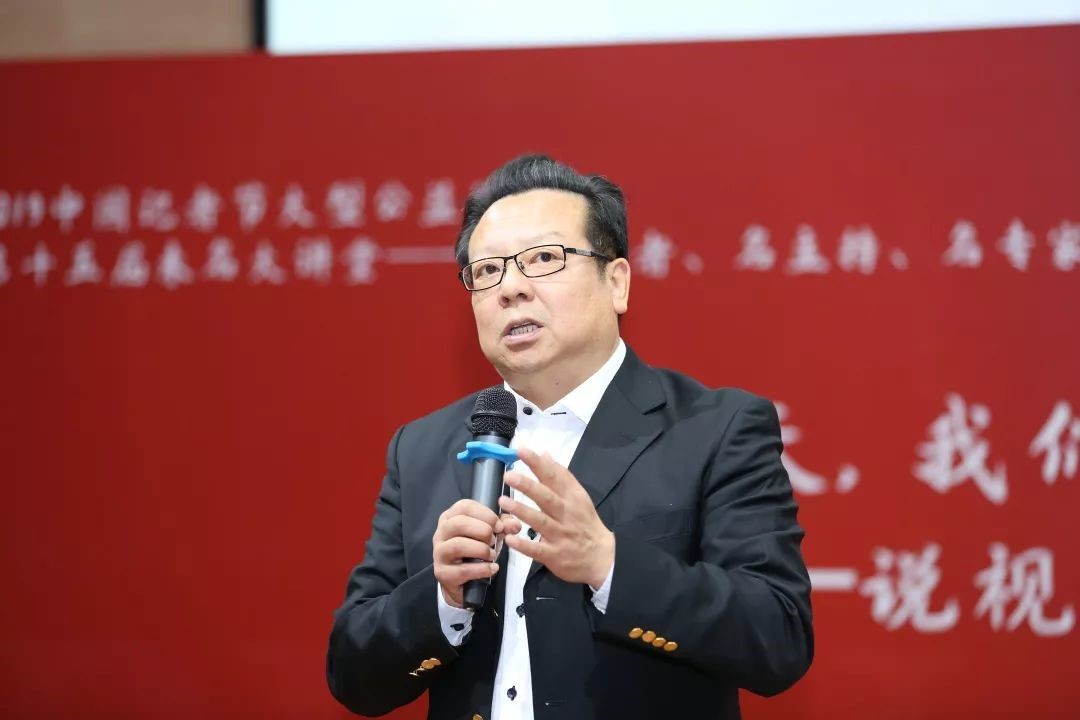 Hu Zhifeng analyzing three main types of videos
Hu Zhifeng analyzing three main types of videos
Shi Tongyu, a research fellow with the Institute of Journalism and Communication, Chinese Academy of Social Sciences, is cautious, even a little pessimistic about the booming development of short videos. Some people might think short videos may rescue traditional media, but Shi said this possibility is slight. First, Shi asked what short video means to journalism. If the short video only works on improving its aesthetic and entertainment levels and does not put enough importance in its content, then what is there other than physical meaning?
“Is a reporter a jack of all trades who can do everything but is skilled in nothing, or a craftsman who pursues the truth and works to perfect everything?”
Shi Tongyu is worried about the journalism world today. Many people think that the elites in the media industry are the people who are “skilled” in all skills. But, he asked, as a reporter, when you look back upon your life many years later, will you say that your short videos were the acme of your career? On another note, he also added that he notices that many journalists these days are anxious and hurried all the time. This worries him.
“High quality news takes time, wait for the soul to come out.” Shi believed that a true journalist is a craftsman, and this kind of spirit is just what we need today.
Shi does not support the idea that short videos can rescue traditional media, because at present, there are no successful business models for reference. “An elephant is still an elephant. We can’t compare our fangs with a hound or our speed with a cheetah,” Shi said. Instead, we should just continue to devote ourselves to what we are doing, and fulfill the duties that belong to us.
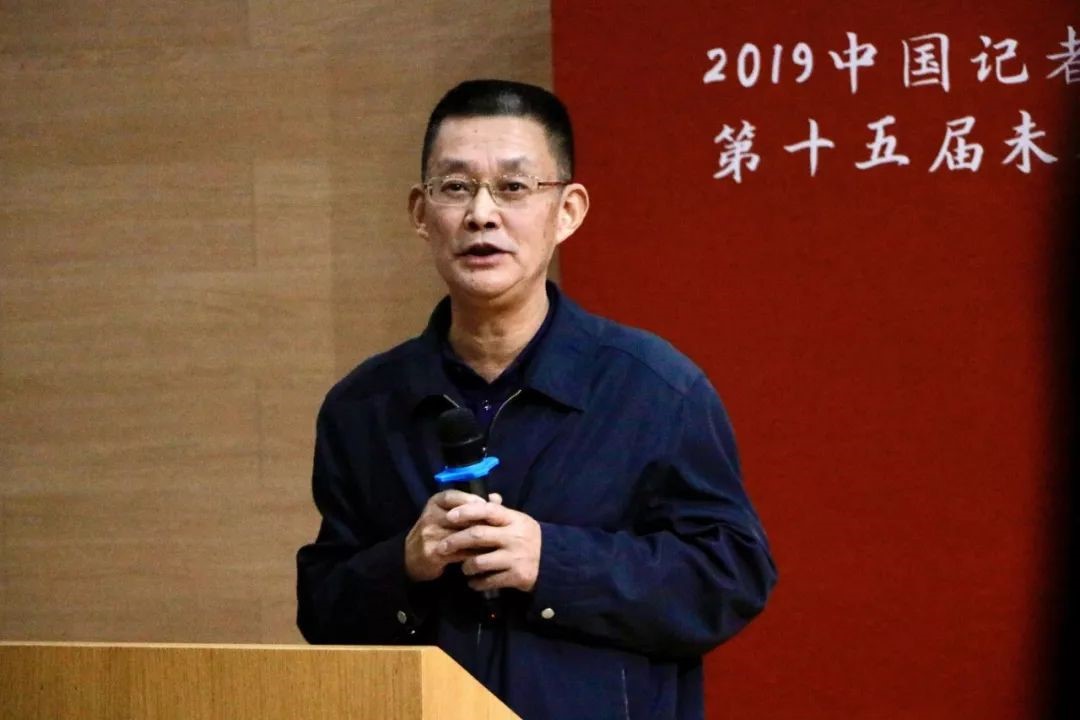
Shi Tongyu is worried about journalistic professionalism today
In the next part of the forum, Chen Xiaochuan, former president of China Youth Daily, and Jing Yidan, a famous presenter with CCTV, answered a few questions from students. Chen Xiaochuan and Jing Yidan emphasized the two different concepts of short videos, those for entertainment and those of the news. When asked about in-depth reporting, Jing observed that almost all media networks now use videos as well. The video is a tool; those who use it decide on the content. Chen once again emphasized the importance of journalistic professionalism, using global affiars as an example.
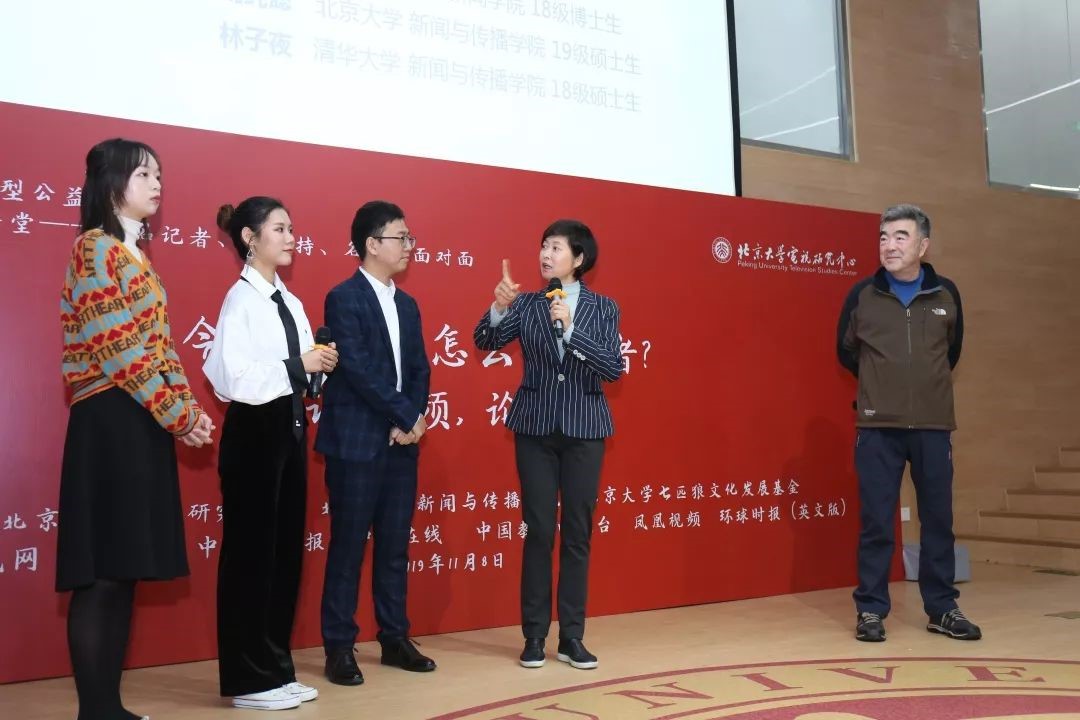
Chen Xiaochuan and Jing Yidan answering questions
In the next round of questions, Bai Yansong and Shi Tongyu were asked about 5G and the appearance of short and long videos. Bai believed that even numbers are improvements while odd numbers are revolutionary, so while 4G was an improvement of 3G, 5G is a revolutionary development in comparison with 4G. He still hoped that in the age of 5G, people will start to watch “medium-length” videos instead of short videos. Technology is constantly developing, so we should never think that there will be an end to it. We always say that we cannot imagine living in the possible future, but the transition of the society is so smooth that we never notice when the future comes. Change is infinite. What is more important is how we face this change.
 Group photo of the forum
Group photo of the forum
On an ending note, Yu Hong thanked all distinguished guests and all the keen learners in the audience for their active participation and interest in the theme. The new generation of journalists may seem to be facing many problems, as technology is renewing faster than before. All those in the media industry need to embrace the change and try to work towards a better future. The need for communication will never change, and that is the core that one need to hold on to.
Reported by: Cherlin Xu
Edited by: Huang Weijian
Photo credit to: PKU Youth, Peking University Television Studies Center
